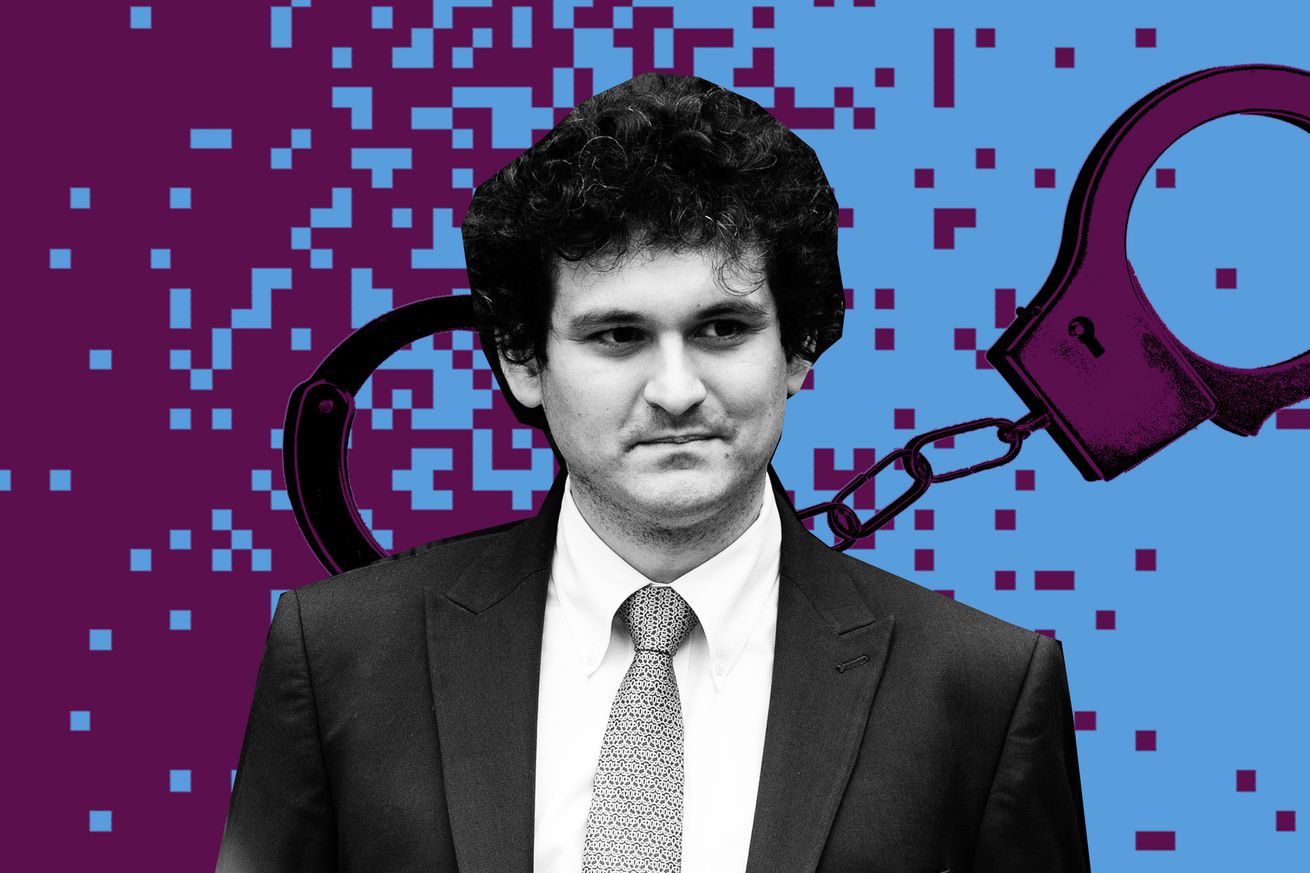
Bankman-Fried gets a shot at his side of the FTX story — then promptly shreds his own credibility with the jury.
Midway through Sam Bankman-Fried’s cross examination, as prosecutor Danielle Sassoon went through a brutal line of questioning like a hot buzzsaw through a butter cow, I found myself reflecting on how smart the average person is. Maybe they don’t know calculus. Maybe they’ll never read Ulysses. Maybe they can’t code. But they definitely know how to identify bullshit when they see it.
So if you, like Bankman-Fried, have moved into the Clintonian territory of “it depends on how you define ‘trading’’” you done fucked up, son. Make whatever “sophisticated” argument you like; even the stupid will see through it.
At various points during Sam Bankman-Fried’s cross examination, I saw jurors shake their heads, frown so hard their lips disappeared, and make prolonged eye contact with each other. Personally, I now have a Pavlovian fear response to the phrase “Is it your testimony that…”
On the stand, Bankman-Fried’s demeanor suggested a spoiled child complaining he didn’t get the biggest scoop of ice cream at his birthday party. He didn’t want to answer the prosecutor’s questions, or his lawyer’s questions — he wanted to answer his own questions, which he liked better. He often replied to yes-or-no questions with nonsense.
The day did not start as an actual disaster. In fact, Bankman-Fried’s direct testimony was the strongest he’d given so far: clear, coherent, believable. On his home territory of direct examination rather than cross-examining the prosecutors’ witnesses, defense lawyer Mark Cohen improved his ability to order a simple chronological narrative, even if he once instructed us to move forward in time from November 7th to… November 7th.
But Bankman-Fried’s recounting of events was supported by very little other evidence. Gary Wang, Caroline Ellison, and Nishad Singh all had text messages, documents, code snippets, and so on to corroborate their versions of events. Bankman-Fried’s testimony had very little of that, and what little it did have was pretty thin.
We were introduced to a document where Bankman-Fried listed his priorities, including: “getting accounting right on FTX.” Cohen and Bankman-Fried used this to show how devoted Bankman-Fried was to getting to the bottom of the general fiasco with Alameda’s money. The idea was to display in real time FTX’s revenue and expenses, where its bank accounts were, how much investor money it had, and so on. This did reveal Bankman-Fried’s priorities: getting accounting right was ranked ninth.
So for the stories Bankman-Fried wanted to tell, we had to rely on… Bankman-Fried. We moved on to Bankman-Fried’s argument about hedging, which I still do not understand except as a way for him to say he’s a smarter trader than his ex-girlfriend, the former Alameda Research CEO Caroline Ellison. The actual evidence suggests Ellison is both a better trader and much savvier than Bankman-Fried. She modeled out a risk scenario that matched almost exactly what happened at FTX, for instance, to try to keep him from sinking $2 billion in venture investing. She is also cooperating with the government. If I have to bet on one of them, I’m going “balls long” Ellison.
Bankman-Fried’s other major task was figuring out how to explain away the infamous “FTX is fine. Assets are fine.” tweet. According to Bankman-Fried, he really believed that at the time. On November 8th, Alameda was still solvent, he said. Almost all of the other events occurred exactly as others had described them, except that Bankman-Fried sounded more heroic in this telling, if only because he was not doing any crimes this time.
Then we got what I had been waiting for: the cross examination. And while Bankman-Fried’s direct testimony was short on contemporaneous evidence, the cross was not. Sassoon was a matador in kitten heels, baiting Bankman-Fried before driving her sword through his shoulders.
Bankman-Fried claimed to have been “not involved as a general principle in day to day trading,” but this turned out to depend highly on how one defines trading. Sassoon quickly introduced the “Vertex” Signal groupchat for discussing Alameda’s trading. In it, we saw messages where Bankman-Fried asked the group how much of two tokens, OXY and MAPS, the group had bought. He then suggested Alameda should buy $1 million to $2 million of each over the next few days. (Bankman-Fried denied that this was him giving instructions, which depends highly on how one defines giving instructions.)
We also saw Bankman-Fried giving directions on Japanese government bonds. Hedging is a form of trading, and Bankman-Fried had just testified about giving Ellison directions on hedging. Then, switching to a December 2022 recording of a Twitter space, we heard Bankman-Fried say he was “not at all involved in the trading and hadn’t been for years” at Alameda. “I was intentionally not getting involved in it” because of possible conflicts of interest. Also in an interview with the Financial Times, Bankman-Fried said he’d walled himself off from trading.
I glanced over at Barbara Fried, the defendant’s mother. She appeared to be biting her nails.
Sassoon moved on to a series of questions about whether Bankman-Fried recalled extremely specific things. Did he recall saying that FTX had reformed how crypto exchanges worked? That he had built a responsible system? That FTX was a thoughtful exchange? That FTX was providing clarity and transparency to the crypto system?
To each of those questions, Bankman-Fried replied, “No, but I might have.”
And then Sassoon played a clip from FTX’s official podcast. You are never going to guess what he said on the pod.
There was more. Had Bankman-Fried referred to FTX as safe in numerous public statements? He couldn’t recall. Did he remember tweeting that the acceptable number of issues when it comes to a client’s money is zero? He couldn’t recall. Had he tweeted that lying to customers broke “sacred rules of conduct” everyone knows to follow? He couldn’t recall. Did he remember that he supported regulation only as long as it protected consumers? He couldn’t recall.
Every single question was followed by evidence of Bankman-Fried publicly using the precise language Sassoon had offered. Several journalists were in the courthouse — some even in the courtroom — as their articles about Bankman-Fried were read aloud. It was obvious to everyone in the courtroom what was going on. Bankman-Fried stuck to his “do not recalls” anyway.
Still, he hadn’t made any of those statements under legal oath, had he? Well… that remained true until we reached his Congressional testimony. Bankman-Fried read aloud testimony he’d submitted to Congress: that trading platforms’ obligations included maintaining sufficient liquid assets that customers could withdraw on request. That platforms should ensure appropriate bookkeeping to prevent misuse of customer assets. Ensuring appropriate management of risks. Avoiding conflicts of interest.
Sassoon immediately followed this with direct messages Bankman-Fried had sent to Kelsey Piper, in which he said this was all just public relations, and “fuck regulators.”
At this point, my notes simply read “Jesus fucking Christ” in all caps.
As the day wore on, I saw the mood in the jury box darken. At least three jurors were visibly fed up with Bankman-Fried’s “don’t recall” followed by the exact statement he’d been asked about. The remarkable thing was not that Sassoon had used Bankman-Fried’s many public statements to make him sound like a liar. It was that by denying he remembered making them so consistently, Bankman-Fried made himself sound like a liar.
Once that was accomplished, Sassoon moved on to the meat of the cross. Multiple statements, from multiple interviews, featured Bankman-Fried saying that Alameda had some special privileges — which was, of course, something Bankman-Fried had also denied to customers.
Then there’s the massive loss from MobileCoin that Alameda took on while under Bankman-Fried’s official leadership. None of the other backstop liquidity providers wanted the position, Sassoon asked, because it was a “loser” — right? As Bankman-Fried hemmed and hawed, Sassoon pointed out the loss cost Alameda hundreds of millions. Had Alameda not taken it on, FTX would have booked the loss itself, she pointed out. And FTX, unlike Alameda, had to share its books with investors. Scapegoating Alameda let FTX remain pristine, which made it much easier to attract VC funds.
But Sasson didn’t leave it there. The loss occurred because someone had exploited several loopholes on FTX in order to make the trade, she noted. Did Bankman-Fried tell investors about this exploit? He did not. Did he tell customers? Nope.
Behind all the finance sheets and code bases, the fall of FTX was in a way incredibly childish: a nerd posse running away with a bunch of other people’s money in the stupidest and simplest way possible. I understand Bankman-Fried went to MIT and majored in physics and was a successful trader on Wall Street. But sitting on the stand, he resembled nothing so much as a child who’s broken a family heirloom and is insisting his invisible friend did it.



/cdn.vox-cdn.com/uploads/chorus_asset/file/25044284/Xbox_Wire_Section_Image_D4X_Logo_1920x1080.jpg) Image: Microsoft
Image: Microsoft




/cdn.vox-cdn.com/uploads/chorus_asset/file/25038755/Cranzcreen.jpg)

/cdn.vox-cdn.com/uploads/chorus_asset/file/25041173/audioplethysmography.gif) Image: Google
Image: Google




/cdn.vox-cdn.com/uploads/chorus_asset/file/25036440/intel_q3_2023.jpg) Image: Intel
Image: Intel


/cdn.vox-cdn.com/uploads/chorus_asset/file/25033383/eye_tracking.gif) Image: Honor
Image: Honor

/cdn.vox-cdn.com/uploads/chorus_asset/file/25029225/msedge_yoCVyeYDEW.jpg) Screenshot by Sean Hollister / The Verge
Screenshot by Sean Hollister / The Verge
/cdn.vox-cdn.com/uploads/chorus_asset/file/25029229/msedge_6Xy4AsRXYT.jpg) Screenshot by Sean Hollister / The Verge
Screenshot by Sean Hollister / The Verge
/cdn.vox-cdn.com/uploads/chorus_asset/file/25029231/msedge_gzOf0nzwpc.jpg) Screenshot by Sean Hollister / The Verge
Screenshot by Sean Hollister / The Verge
/cdn.vox-cdn.com/uploads/chorus_asset/file/25029232/msedge_He5soYyzls.jpg) Screenshot by Sean Hollister / The Verge
Screenshot by Sean Hollister / The Verge
/cdn.vox-cdn.com/uploads/chorus_asset/file/25029236/msedge_He5soYyzls_2.jpg) Screenshot by Sean Hollister / The Verge
Screenshot by Sean Hollister / The Verge
